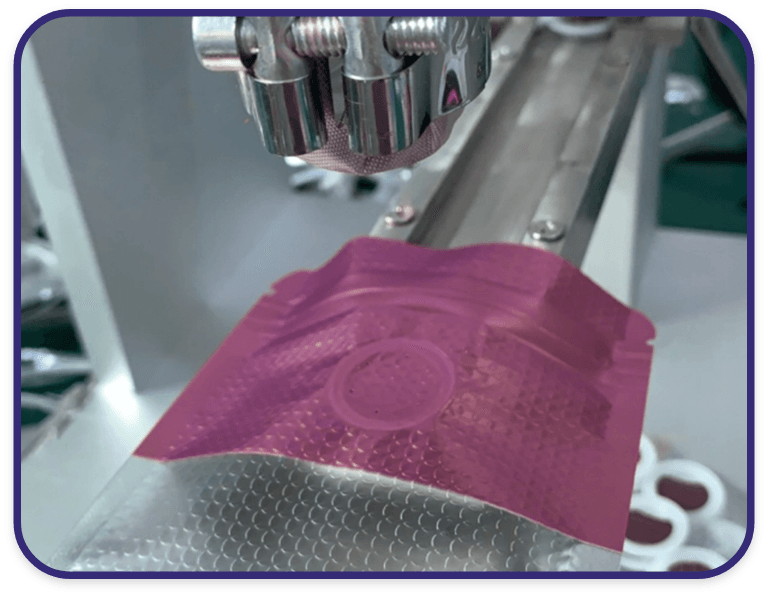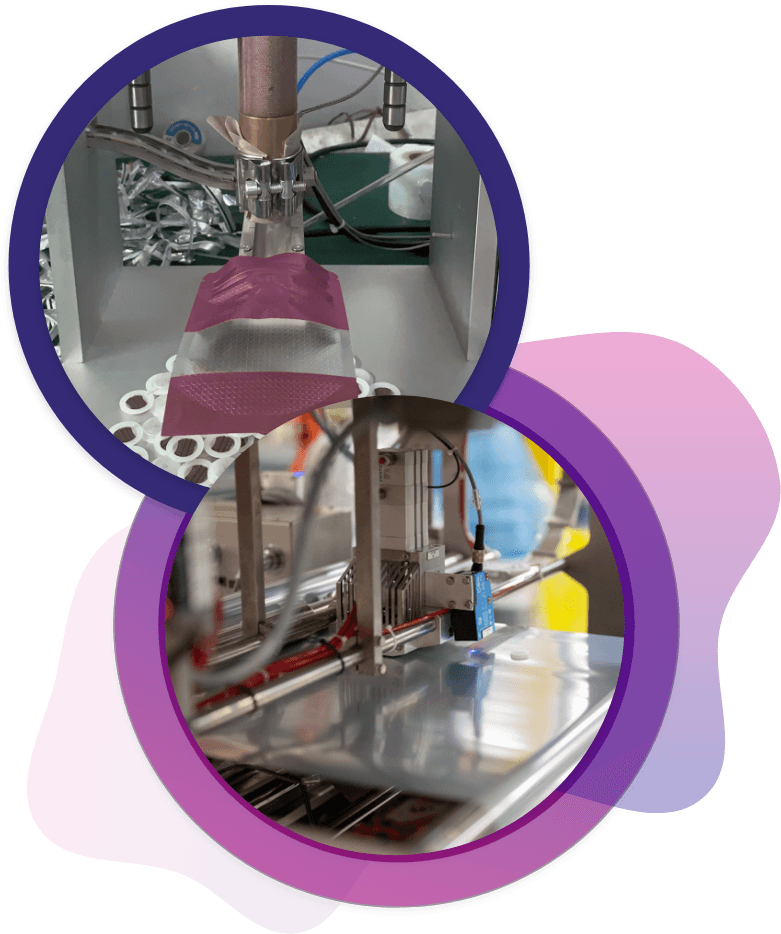No products in the cart.
Degassing Valve Failure, Analyzed: What Goes Wrong & How to Prevent It
When it comes to packaging fresh-roasted coffee, every detail matters—especially the addition of a degassing valve system. These small, often-overlooked valves have a critical effect on preserving product freshness and ensuring customer satisfaction by allowing carbon dioxide to escape while blocking hot air, oxygen, and moisture from entering the pipeline. But what happens when these valves result in a failure? From bloated bags and stale beans to product returns and reputational damage, valve failure can have costly consequences on your leads and bottom line.
In this blog, we’ll explore why degassing valve systems sometimes don’t work as intended, break down the most common problems that cause valve failure, and share how to prevent these situations with the right equipment, materials, instruments, and packaging expertise.


What Degassing Valves Are Designed to Do
Coffee beans and some other fermented products (like sauerkraut or kimchi) are prone to release gas after they've been roasted or processed. The process usually only lasts for a few hours to a day after the beans have been roasted, but many roasters want to bag the beans as quickly as possible. Others want insurance that there won't be a possibility for the bag to bloat and explode under pressure if the beans continue to release gas long after packaging. This is where one-way degassing valves come into play.
One-way degassing valves are designed to release or remove Co 2 from inside the bag without introducing oxygen or moisture into the bag. Think of these valve systems like a pool vacuum pump: when turned on, the vacuum pump pulls water out of the pool, pushes it into a filter to get cleaned, and then the vacuum pump returns the water back inside the pool. A degassing valve system is like this except the final step is skipped. The result? Fresh, tasty beans that are saturated with their own natural oils and nothing else.
Why Degassing Valves Fail: Common Causes
When it comes to degassing valves in practical applications, there are several reasons why these valves can fail. Here are some of the most common reasons for valve failure.
Adhesion issues from mismatched materials
Contrary to popular belief, glue is not actually used when adding a degassing valve to packaging. Instead, the valves are heat-sealed into the bag, but the heat can fluctuate due to various reasons. Different materials require different amounts of heat and dwell time for the valve to adequately adhere to the bag. When it doesn't adhere properly, the degassing valve can pop off.
Misplacement on bag (too far from gas pressure zones)
Some customers want the valve position moved, and if it's new location is not anywhere near where the gas is getting the most degassed, it can create a problem. This is not very common, but it's an issue worth pointing out as the pressure from the gas can build up if the valve is improperly placed.
Non-functioning valves are blocked due to design defects
There's a constant pressure to reduce the cost of packaging. One of the more costly elements is the degassing valve because it consists of a very small one-way valve. We found that valve quality can vary between manufacturers and between lots. It's very hard to QC a lot of valves because you only know if they're working if they're degassing. You can test individual valves out of the lot that you received, but unfortunately it's not something you can systematically visually inspect.

The Real Impact of Valve Failure
If the "atmospheric pressure" (i.e., built up carbon dioxide) is not released properly via the valve, it can have huge impacts on both the product itself and the business. For the sake of this blog, we'll divide these impacts into two sections: product consequences and business consequences, so you can better understand how essential proper valve systems are to a coffee manufacturer.
Product Consequences
If your degassing valve is not effective, it can cause your coffee to become stale and oxidized. Not only does this impact the taste of your product, but it can also impact the reputation of your brand. Nobody wants stale, discolored coffee beans that don't even reach their "use by" date. A happy customer commonly means a repeat customer, so keep your customers happy with fresh, tasty coffee beans.
Business Consequences
In a day and age where everyone posts everything on social media, negative customer reviews and complaints can generally eat into your bottom line. Bags that are inflated, leaking, or collapsing on the store shelves won't do your brand reputation any justice, and having to replace misshapen bags or oxidized coffee products can result in significant economic loss.
CarePac’s Engineering-First Solution
At CarePac, we take an engineering-first approach to our packaging. From understanding the chemistry behind off-gassing, the pressure it can create inside the bag, and the connection it has to packaging, we've crafted the perfect system to help relieve some of that built-up pressure. Our JW2 degassing valve application machines are capable of applying 1,500 valves per hour, and the alignment of the valve is controlled by an adjustable depth gauge and laser sight.
These state-of-the-art innovations are present in our valve application system and our equipment is calibrated, clean, and expertly maintained. We understand that coffee beans are sensitive to air and moisture but also release carbon dioxide, which is why our system pumps out the CO2 while keeping air and moisture out. If you have questions about the difference a valve installation can make when applied in your packaging pipeline, contact us for more information.

Partner with a Packaging Company That Understands Valve Science
Are you a roaster or CPG brand looking for a packaging partner who understands your needs and can help you avoid costly mistakes? CarePac is here to help you get out of the past and create future-proof packaging that will benefit your bottom line and help your product sell.
So, why CarePac? We'll help you:
Level up your coffee packaging and contact CarePac today to schedule a free consultation and discuss how we can fit into your coffee packaging pipeline. There's no time like the present to take action.

Degassing Valves: FAQs
Degassing valves work a little differently than a vacuum pump. They allow gas that has built up inside the instrument (in this case a pouch or bag) to exit the bag, so the level of gas never builds up enough to cause the bag to explode.
Unfortunately, this is one example where it's difficult to test the extent of how well a degassing valve works, since the only way to test it is to use it. In fact, in the coffee industry, you really only come across degassing valve failure once the bag has been filled with coffee beans and at that point it's too late to rectify the issue.
If a degassing valve on a coffee bag fails, the bag may inflate or burst due to trapped CO2, and this can lead to the coffee inside could stale faster due to oxygen exposure.
Lets Get Started

Made In
The USA

Full Pouch
Customization


